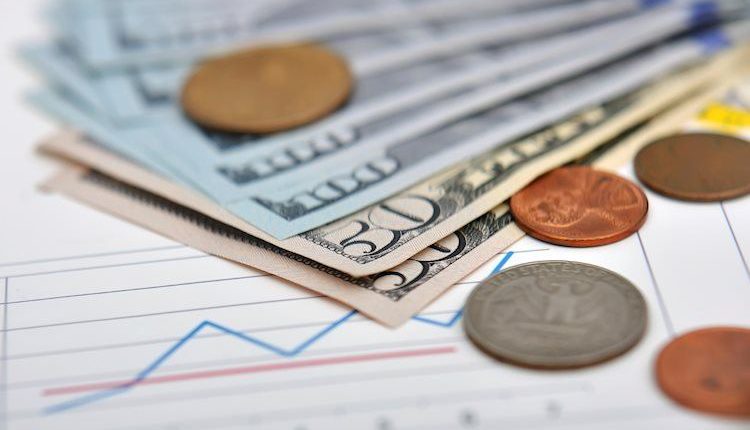Here is what you need to know on Monday, December 2:
The US Dollar (USD) gathers strength against its major rivals to begin the month of December. The US economic calendar will feature Construction Spending for October and ISM Manufacturing PMI data for November. During the European trading hours, Sentix Investors Confidence for December and the Unemployment Rate figure for October from the Euro area will be watched closely by market participants.
US Dollar PRICE Today
The table below shows the percentage change of US Dollar (USD) against listed major currencies today. US Dollar was the strongest against the Euro.
| USD | EUR | GBP | JPY | CAD | AUD | NZD | CHF | |
|---|---|---|---|---|---|---|---|---|
| USD | 0.47% | 0.28% | 0.41% | 0.24% | 0.08% | 0.25% | 0.40% | |
| EUR | -0.47% | -0.23% | -0.05% | -0.22% | -0.30% | -0.21% | -0.04% | |
| GBP | -0.28% | 0.23% | 0.17% | 0.01% | -0.06% | 0.02% | 0.16% | |
| JPY | -0.41% | 0.05% | -0.17% | -0.18% | -0.30% | -0.14% | -0.08% | |
| CAD | -0.24% | 0.22% | -0.01% | 0.18% | 0.00% | 0.02% | 0.14% | |
| AUD | -0.08% | 0.30% | 0.06% | 0.30% | 0.00% | 0.08% | 0.22% | |
| NZD | -0.25% | 0.21% | -0.02% | 0.14% | -0.02% | -0.08% | 0.16% | |
| CHF | -0.40% | 0.04% | -0.16% | 0.08% | -0.14% | -0.22% | -0.16% |
The heat map shows percentage changes of major currencies against each other. The base currency is picked from the left column, while the quote currency is picked from the top row. For example, if you pick the US Dollar from the left column and move along the horizontal line to the Japanese Yen, the percentage change displayed in the box will represent USD (base)/JPY (quote).
Over the weekend, US President-elect Donald Trump wrote on Truth Social that BRICS nations would face 100% tariffs if there were to create a new currency to replace the USD. “There is no chance that the BRICS will replace the US Dollar in international trade, and any country that tries should wave goodbye to America,” he said. After losing more than 1.5% in the previous week, the USD recovers early Monday and stays in positive territory above 106.00 in the European morning. Meanwhile, US stock index futures trade in negative territory, pointing to a cautious market mood at the start of the week.
During the Asian trading hours, the data from Australia showed that Retail Sales rose by 0.6% on a monthly basis in October. This reading followed the 0.1% increase recorded in September and came in better than the market expectation for a growth of 0.3%. AUD/USD largely ignored this data and was last seen moving sideways slightly above 0.6500.
EUR/USD closed the day in positive territory above 1.0500 on Friday and registered weekly gains. The pair corrects lower early Monday and fluctuates in the red below 1.0550.
After rising more than 1.5% last week, GBP/USD edges lower and trades at around 1.2700 in the European morning. The data from the UK showed that Nationwide Housing Prices rose 1.2% on a monthly basis in November.
Gold posted gains on Friday but failed to preserve its recovery momentum at the beginning of the week. At the time of press, XAU/USD was trading below $2,630, losing nearly 1% on the day.
USD/JPY extended its slide on Friday and lost more than 3% for the week. The pair rebounds toward 150.50 in the European morning, gaining nearly 0.5% on the day.
BRICS FAQs
The BRICS is the acronym denoting the grouping of Brazil, Russia, India, China and South Africa. The name was created by Goldman Sachs’ economist Jim O’Neill in 2001, years before the alliance between these countries was formally established, to refer to a group of developing economies that were predicted back then to lead the global economy by 2050. The bloc is seen as a counterweight to the G7, the group of developed economies formed by Canada, France, Germany, Italy, Japan, the United Kingdom and the United States.
The BRICS is a bloc which intends to give voice to the so-called “Global South”. The alliance tends to have similar views on geopolitical and diplomatic issues, but still lacks a clear economic integration as the governing systems and cultural divergence between its members is significant. Still, it holds yearly summits at the highest level, coordinates multilateral policies and has implemented initiatives such as the creation of a joint development bank. Egypt, Ethiopia, Iran and the United Arab Emirates joined the group in January 2024.
The five founding members of the BRICS alliance account for 32% of the global economy measured at purchasing power parity as of April 2023, according to data from the International Monetary Fund. This compares with the 30% of the G7 group.
There has been increasing speculation about the BRICS alliance creating a currency backed by some sort of commodity like Gold. The proposal is meant to reduce the use of the dominant US Dollar in cross-border economic exchanges. In the BRICS’ 2023 summit, the group stressed the importance of encouraging the use of local currencies in international trade and financial transactions between the members of the bloc as well as their trading partners. The group also tasked finance ministers and central bank governors “to consider the issue of local currencies, payment instruments and platforms” for this purpose. Even if the bloc’s de-dollarization strategy looks clear, the creation and implementation of a new currency seems to have a long way to go.
Read the full article here

